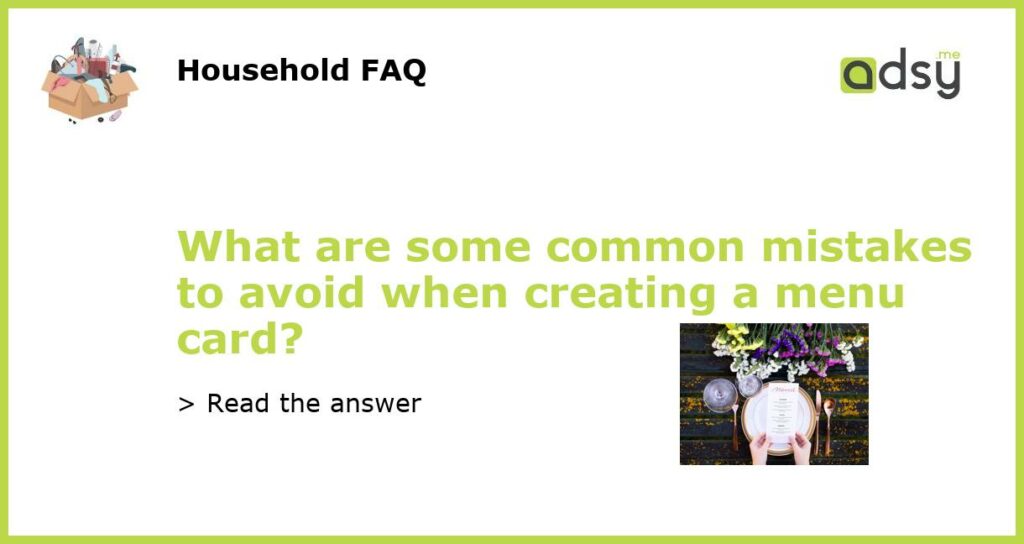Importance of a well-designed menu card
A menu card is not just a list of items, but it also represents the brand image of a restaurant. A well-designed menu card can impress customers, showcase the restaurant’s personality, and increase sales. On the other hand, a poorly designed menu card can frustrate customers, make them avoid certain dishes, and decrease profits. Therefore, it’s essential to avoid some common mistakes while creating a menu card.
Too many or too few items
A menu card should have enough items to offer variety to customers, but not too many items that they get overwhelmed. Having too few items can make customers feel like they don’t have enough choices and can lead to them leaving without ordering anything. On the other hand, having too many items can be overwhelming, and customers might struggle to make a decision. A good rule of thumb is to have around 7-10 items per category (appetizers, entrees, etc.) and to rotate seasonal dishes.
Lack of visual hierarchy
A menu card should have a clear visual hierarchy that guides customers’ attention towards the most important items. For instance, the most profitable or signature dishes should be at the top or highlighted in a box. The use of typography, colors, and images can also help create a visual hierarchy. However, it’s essential to avoid using too many design elements, which can make the menu card cluttered and confusing.
Inconsistency
A menu card should be consistent in terms of design, layout, and information throughout. Inconsistencies can make a menu card look unprofessional and confuse customers. For instance, if the same dish is mentioned differently on different pages (e.g., spaghetti bolognese and bolognese spaghetti), it can be confusing. Moreover, it’s crucial to ensure that the menu card matches the restaurant’s overall branding and aesthetic.
Lack of information
A menu card should provide enough information about each item to help customers make an informed decision. However, it’s essential to avoid overwhelming customers with too much detail. A good practice is to mention the name of the dish, a brief description, the price, and any dietary or allergy information (e.g., vegetarian, gluten-free). Moreover, it’s crucial to ensure that the menu card is updated regularly to reflect changes in the menu items and prices.






